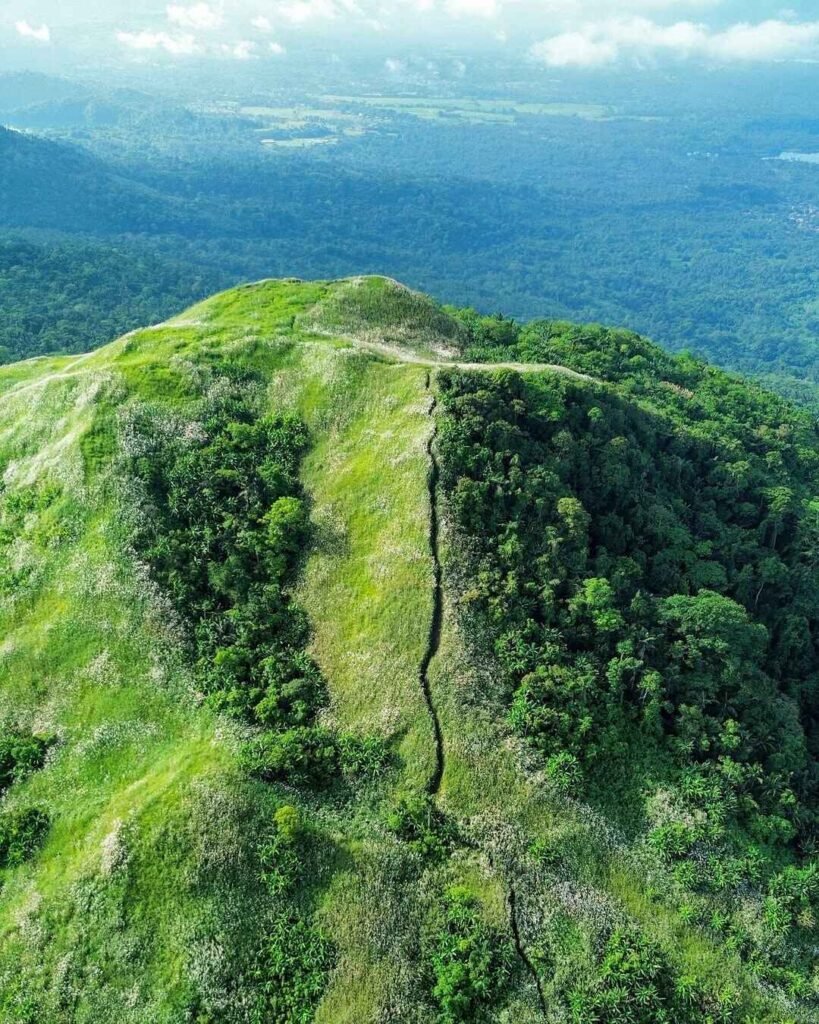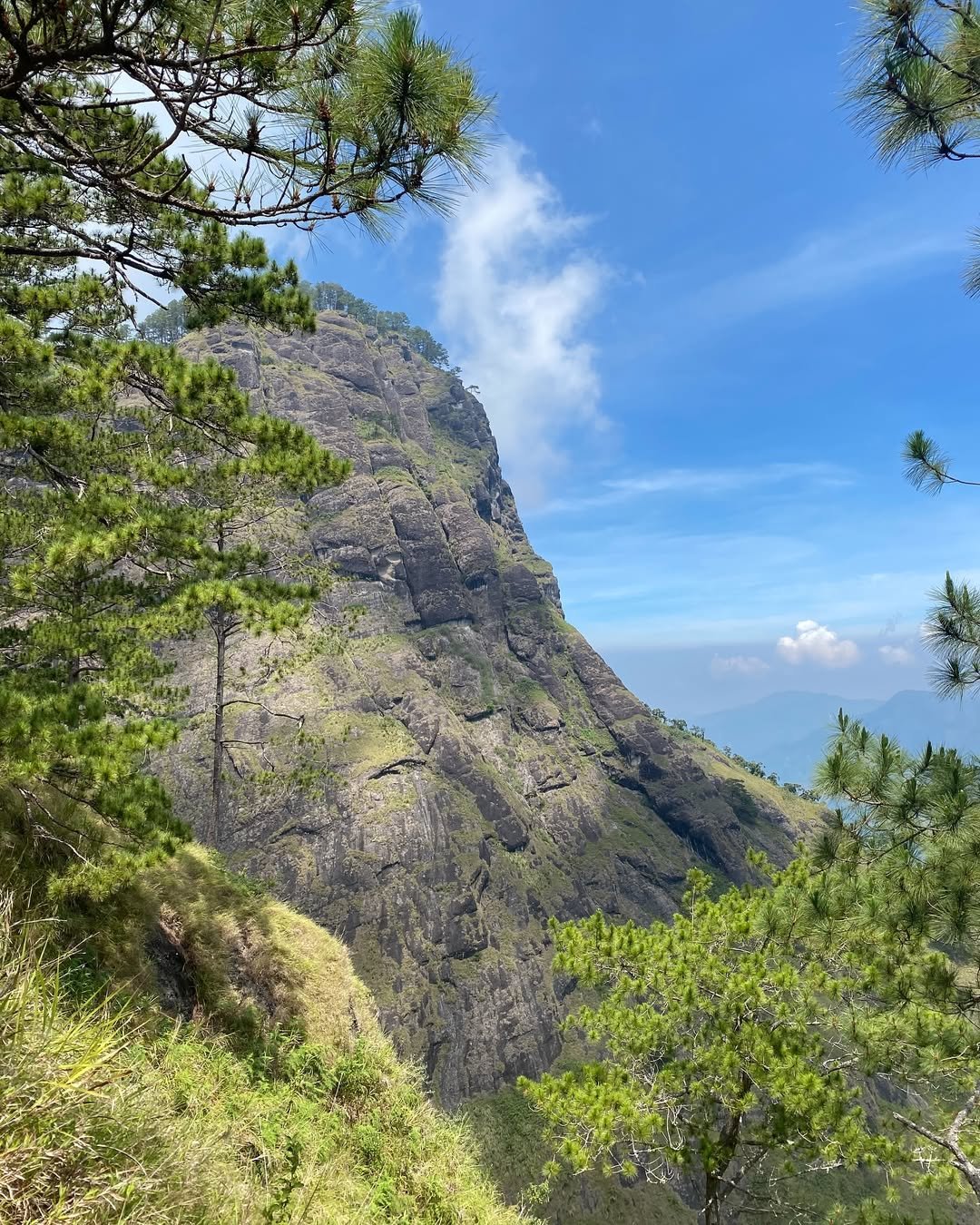
Introduction – Answering the Call of the Mountain Gods
They say some mountains have a soul, and if that’s true, then Mt. Kabunian has an ancient one. The name itself, whispered among the hiking community with a mix of reverence and trepidation, translates to “home of the gods” in the local Kankana-ey language. When I first heard about it, I wasn’t just intrigued; I felt a pull. This wasn’t just another peak to bag; it was a pilgrimage.
Located in the remote, rugged embrace of Bakun, Benguet, this mountain offers more than just breathtaking views—it offers a profound connection to culture, history, and the raw power of the Cordilleras.
In this guide, I’m going to take you on a journey. I’ll share my firsthand experience, from the heart-pounding bus ride into the mountains to that final, triumphant step on the summit. We will break down everything you need to know: the real difficulty level of Mt. Kabunian, the logistics of getting there, the stories etched into its rocky face, and the practical tips that will turn a challenging hike into an unforgettable adventure.
This isn’t just about the climb; it’s about understanding why this mountain is so sacred. Forget the generic travel blogs; this is the real, unfiltered story of what it takes to walk the path of the gods. Are you ready?
Table of Contents
The Anatomy of a Sacred Mountain – What is Mt. Kabunian?
Before you even think about lacing up your hiking boots, it’s crucial to understand what makes Mt. Kabunian so special. It’s more than just a dot on a map; it’s a living cultural landmark. When I was there, speaking with our local guide, Mang Rey, he didn’t talk about it as a tourist destination but as the center of his ancestors’ world.
Where is Mt. Kabunian Located? The Heart of the Cordilleras
So, where is Mt. Kabunian located? It’s nestled deep within the municipality of Bakun in the province of Benguet, Philippines. This isn’t a place you just stumble upon. Getting to Mt. Kabunian, Bakun, Benguet, is an adventure in itself, involving long bus rides that snake through some of the most dramatic mountain passes in the country.
It is one of the three famed mountains in the “Bakun Trio,” alongside Mt. Tenglawan and Mt. Lubo. Its isolation is part of its charm, preserving its pristine environment and the rich culture of the people who call its foothills home.
The Legend and History of Kabunian
The Mt. Kabunian history is deeply intertwined with the spiritual beliefs of the Kankana-ey people. “Kabunian” is the name of their supreme deity. According to local lore, the mountain is his dwelling place. This is why you’ll find sacred sites along the trail, including ancient burial caves.
As I hiked, I saw small, wooden coffins tucked into crevices in the rock face—a humbling and powerful reminder that we were treading on sacred ground. Our guide asked us to be quiet and respectful in these areas, a request we were more than happy to honor. It’s a place of worship, not just recreation.
The Vital Statistics: MASL and Trail Distance
For the technical-minded hikers, let’s get down to the numbers. The official MASL of Mt. Kabunian (Meters Above Sea Level) is approximately 1,789 meters, or about 5,869 feet. While not the highest in the Philippines, its challenge lies in the terrain and the steepness of the ascent.
The entire back-and-forth Mt. Kabunian hike covers a distance of roughly how many KM is Mt. Kabunian? It’s about 12 to 14 kilometers, depending on whether you take the side trip to the falls. Don’t let the seemingly short distance fool you; much of it is a vertical challenge.
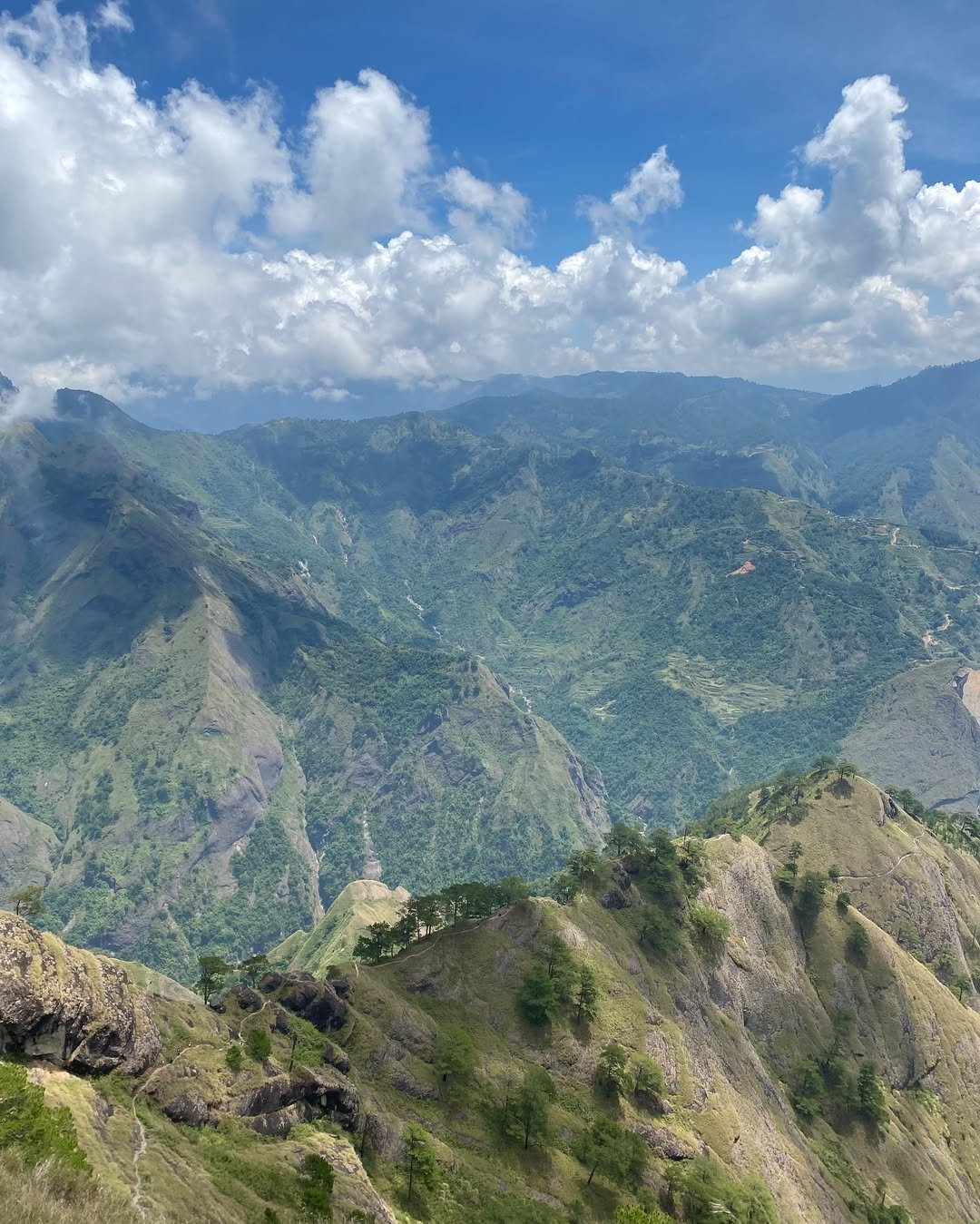
The Moment of Truth – Gauging the Challenge
This is the question on every potential hiker’s mind: Just how hard is it? Let me be perfectly clear: the difficulty level of Mt. Kabunian is high. This is not a walk in the park.
Is Mt. Kabunian a Major Hike?
Yes, without a doubt, is Mt. Kabunian a major hike. Most local hiking groups classify it as a 5/9 or 6/9 on the difficulty scale. The trail is characterized by a relentless, steep ascent with significant exposure to the sun and cliffsides. There are very few flat sections to catch your breath.
My own leg muscles were screaming on the way up, and I’ve done my fair share of mountains! The combination of elevation gain, technical sections, and the tropical heat makes this a serious undertaking that requires solid physical conditioning.
Is Mt. Kabunian Good for Beginners?
To be blunt, is Mt Kabunian good for beginners? Absolutely not. I cannot stress this enough. If you are a first-time hiker or have only done minor climbs, please do not make this your first major hike. The physical demand and the psychological challenge of the exposed pathways (especially the “Stairway”) can be overwhelming.
I personally recommend having at least 3-5 challenging day hikes under your belt before attempting Kabunian. You need to be comfortable with long hours of trekking, steep inclines, and heights.
Mt. Kabunian vs Mt. Ulap: A Realistic Comparison
Many hikers use Mt. Ulap as a benchmark, so let’s make the comparison: Mt. Kabunian vs Mt. Ulap. While both are in Benguet, they are worlds apart in terms of difficulty. Mt. Ulap is famous for its rolling, grassy ridges and a more gradual, scenic trail. It’s challenging but very manageable for active beginners. Mt. Kabunian is a different beast entirely.
Imagine taking the steepest parts of Mt. Ulap and making that the entire trail. The terrain on Kabunian is rocky, often requiring you to use your hands, and the infamous “Stairway” section is a unique challenge that Ulap does not have. If you found Mt. Ulap to be a breeze, you might be ready for Kabunian. If you struggled on Ulap, you need more training.
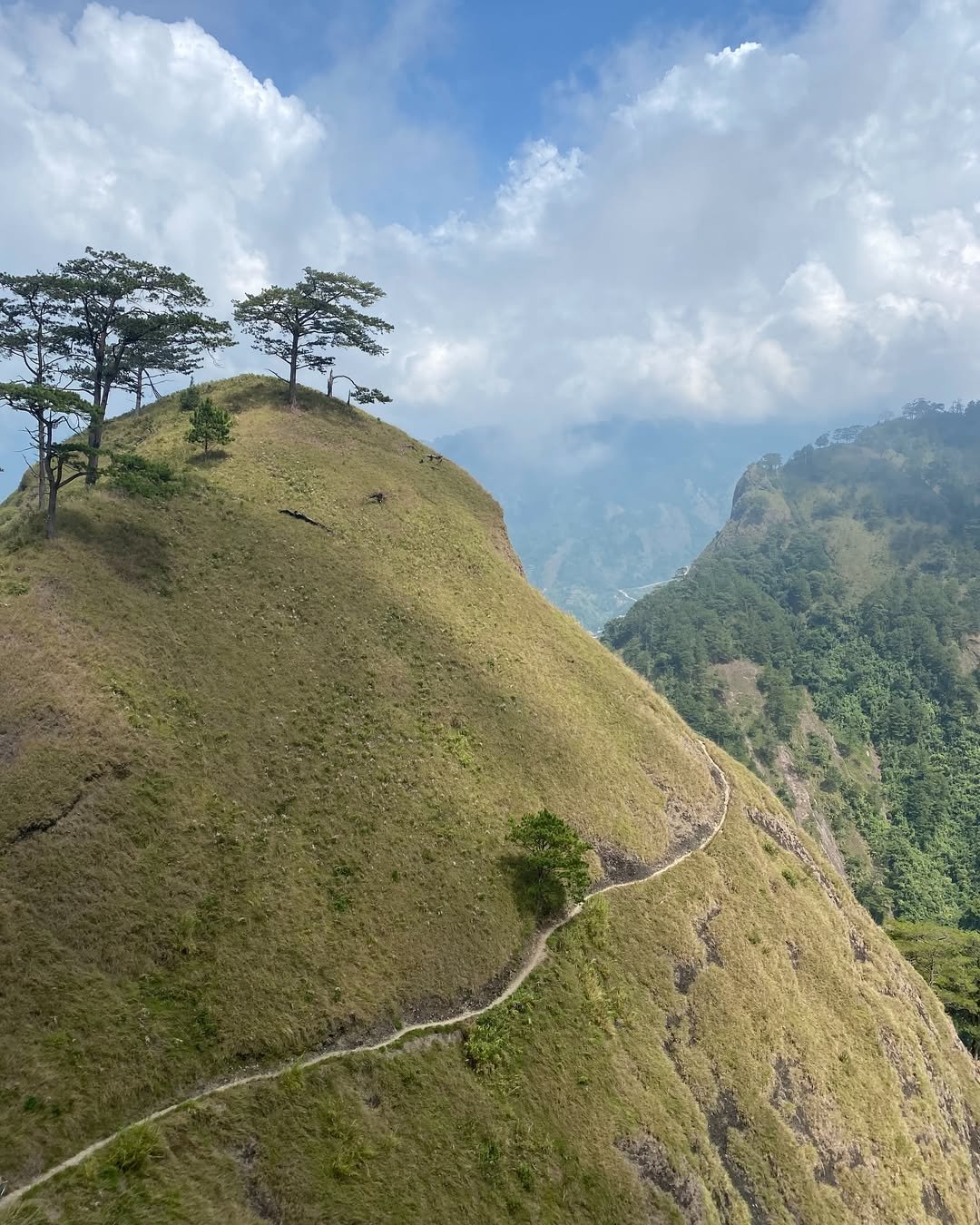
The Sacred Trail – A Firsthand, Step-by-Step Guide
This is the heart of the adventure. The Mt. Kabunian trail is a story that unfolds with every step. I remember the air being crisp and cool as our group gathered before sunrise, the excitement palpable.
The Starting Line: The Mt. Kabunian Jump-Off
The journey begins at the Mt. Kabunian jump off point in Poblacion, Bakun. Here, you’ll find the registration center and the waiting area where you meet your local guide. Our guide, a man whose family had lived in the village for generations, gave us a brief but powerful orientation.
He spoke of the mountain’s spirit and reminded us to leave nothing but footprints. This is also your last chance for a proper restroom and to buy any last-minute supplies. My pro-tip: Fill up all your water bottles here. While there’s a water source on the trail, it’s a good distance away, and you’ll be thankful for the extra hydration.
The Initial Ascent: Rice Paddies and Rocky Paths
The first hour of the Mt. Kabunian hike is deceptively charming. You walk through small communities and beautiful, terraced rice paddies that cling to the mountainside. The view is stunning, but don’t get too comfortable. I made the mistake of looking at the view too much and nearly slipped on a wet, mossy stone. These initial paths are narrow and can be incredibly slippery, especially after rain. This section warms up your legs for the grueling ascent to come. It’s a beautiful, cultural immersion before the raw, wild nature of the mountain truly takes over.
The Main Event: The Mt. Kabunian “Stairway to Heaven”
And then, you see it. The feature that gives this mountain its legendary status: the Mt. Kabunian Stairway to Heaven. This is a long, winding section of the trail where local villagers have painstakingly embedded flat stones into the side of a near-vertical rock face, creating a crude but functional staircase. On one side, you have the solid mountain wall. On the other, a breathtaking (and slightly terrifying) drop.
I have to admit, my heart was in my throat for the first few minutes. You are completely exposed. The “stairs” are uneven, and there are no handrails. This is a mental game as much as a physical one. My advice: don’t look down. Focus on your footing, maintain three points of contact when possible, and trust the path.
The views from here are otherworldly, and it’s where you’ll want to take that iconic Mt. Kabunian photo. Just be sure you are stable before you pull out your camera! This part of the trail is an engineering marvel and a testament to the resilience of the local people.
The Summit and the Side Quest: Mt. Kabunian Falls
After what feels like an eternity on the stairway, the trail eventually eases into a forested path leading to the Mt. Kabunian Summit. The summit itself isn’t a single sharp peak but a rocky plateau with several viewpoints. The feeling of reaching it is pure elation. You’re surrounded by a 360-degree panorama of the Cordilleran mountain range. On a clear day, you can see the other peaks of the Bakun Trio.
On the descent, you have an option for a side trip to the Mt. Kabunian falls. Do it. Your aching muscles will thank you. The falls are a beautiful, multi-tiered cascade with a basin of refreshingly icy water. Dipping my feet in that water was one of the most blissful moments of my entire trip. It’s the perfect reward after a grueling climb.
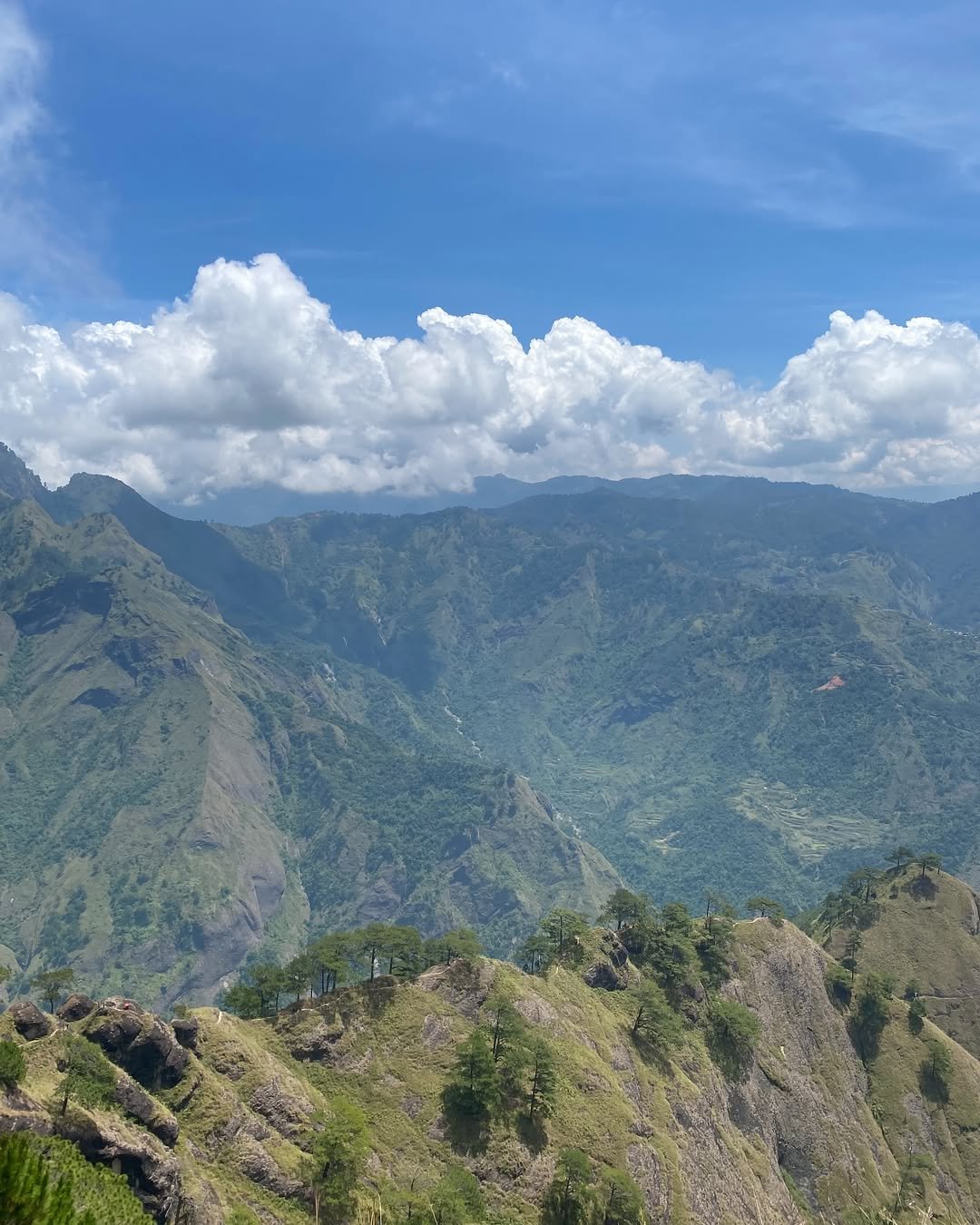
Mission Planning – Your Blueprint for Success
A successful climb is 90% preparation. You can’t just show up and expect to conquer Kabunian. Here’s everything you need to plan your trip.
When to Go: The Best Month to Hike Mt. Kabunian
Timing is everything. The best month to hike Mt. Kabunian is during the dry season, which typically runs from November to May. I went in February, and the weather was perfect—clear skies, cool temperatures, and a dry trail. Hiking during the rainy season (June to October) is highly discouraged. The trail becomes dangerously slippery, the risk of landslides increases, and you likely won’t get the famous views due to cloud cover. For the best experience, aim for the cooler months of December to February.
How to Go to Mt. Kabunian: Logistics from Manila and Baguio
Getting there requires some patience. Here’s the breakdown of how to go to Mt. Kabunian:
From Manila: Your first leg is getting from Manila to Baguio City. Take an overnight bus from terminals in Cubao or Pasay. Victory Liner and Genesis Bus are reliable options. The trip takes about 4-6 hours.
From Baguio to Mt. Kabunian: This is the trickier part. Once in Baguio, you need to get to Bakun.
Public Bus: There are buses heading towards Sagada via the Halsema Highway that pass by the junction to Bakun (in sitio Lam-ayan, Buguias). From the junction, you’ll need to hire a habal-habal (motorcycle taxi) for the long ride to Bakun proper. This is the cheapest but most challenging option.
Van Rental: The most common and recommended method for groups is to rent a van in Baguio. It’s more expensive but takes you directly to the jump-off point, saving you time and a lot of hassle. We opted for this, and it was worth every peso.
Guides, Fees, and Formalities
You are required to register and hire a local guide. Do not attempt this hike without one. The Guide fee is standardized by the local tourism office and is usually around ₱1,000 to ₱1,500 per guide for a day hike (good for up to 5 people, subject to change). There is also a small environmental and registration fee per person. Your guide is not just for navigation; they are your link to the local culture, a safety expert, and an invaluable source of stories and information. Remember to tip them if they do a great job!
A Battle-Tested Mt. Kabunian Sample Itinerary
Here’s a typical weekend warrior Mt. Kabunian sample itinerary:
Day 0 (Friday):
9:00 PM: Board overnight bus from Manila to Baguio.
Day 1 (Saturday):
3:00 AM: Arrive in Baguio. Meet your pre-booked van.
4:00 AM: Depart for Bakun, Benguet (a long 4-6 hour drive).
9:00 AM: Arrive at the jump-off. Register, secure guide, final prep.
9:30 AM: Start hike.
1:30 PM: Arrive at Mt. Kabunian Summit. Lunch and photos.
2:30 PM: Start descent.
5:30 PM: Arrive back at jump-off. Tidy up.
6:30 PM: Check into a local homestay in Bakun. Dinner and rest.
Day 2 (Sunday):
7:00 AM: Breakfast.
8:00 AM: Depart from Bakun back to Baguio.
2:00 PM: Arrive in Baguio. Late lunch, buy souvenirs.
5:00 PM: Board bus back to Manila.

Conclusion – More Than a Mountain, A Memory
Standing on the summit of Mt. Kabunian, with the wind whipping around me and the endless sea of Cordilleran peaks stretching to the horizon, I realized this hike was more than just a physical challenge. It was a lesson in respect—for nature, for culture, and for my own limits. The soreness in my legs faded in a few days, but the memory of the “Stairway to Heaven,” the sight of the ancient coffins, and the taste of cold water from the falls will stay with me forever.
It’s a tough, demanding, and utterly rewarding journey. It will test you, push you, and maybe even scare you a little. But it will also fill you with a profound sense of accomplishment and a deeper appreciation for the wild, sacred places of the Philippines. If you’re an experienced hiker looking for a climb with soul, Mt. Kabunian is waiting. It’s not just a place you visit; it’s an experience that changes you.
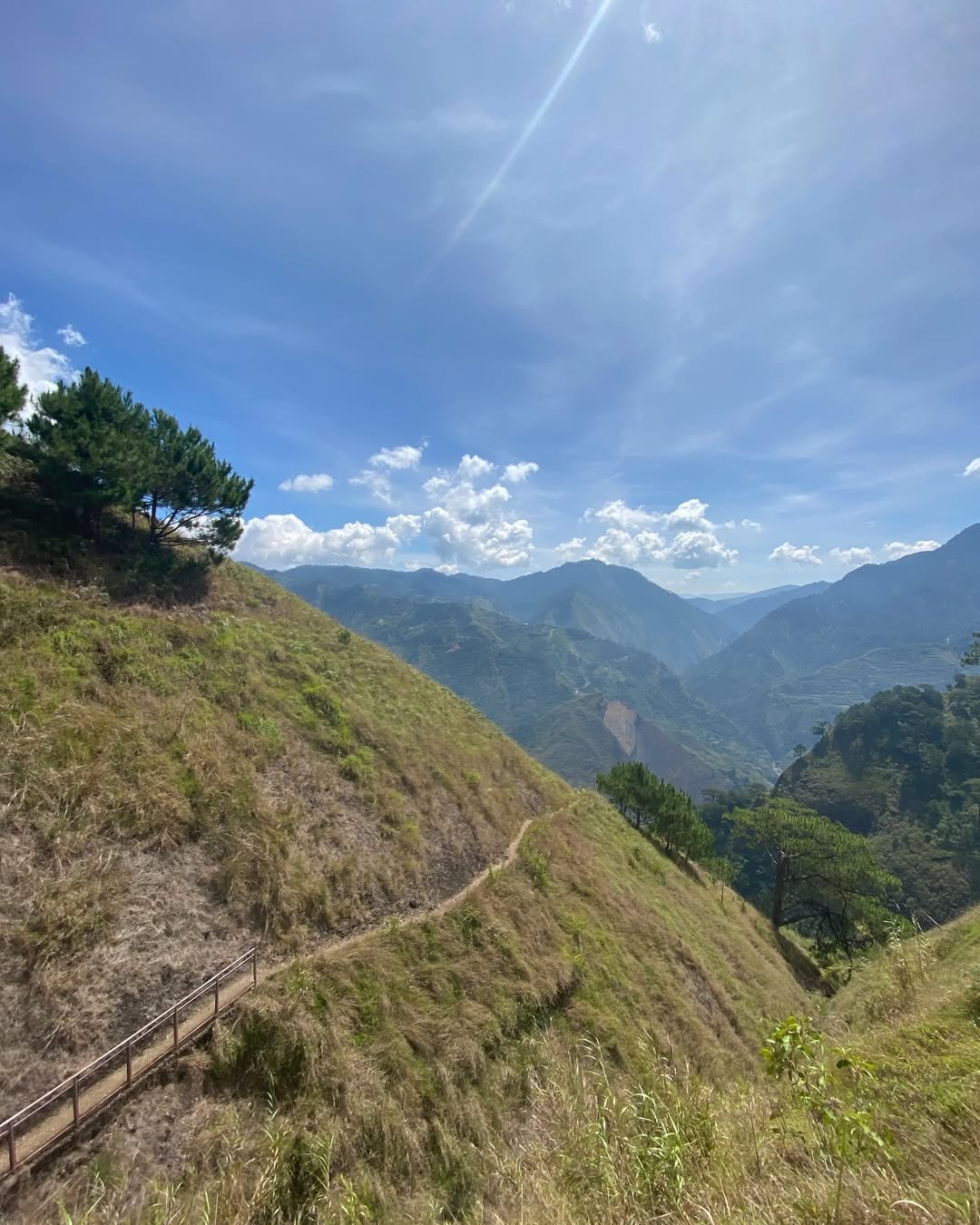
Frequently Asked Questions (FAQ)
Q1: To reiterate, how many KM is the Mt. Kabunian trail?
The trail is approximately 12 to 14 kilometers for a round trip, including the optional side trip to the falls.
Q2: Can I camp at the summit of Mt. Kabunian?
Generally, camping at the summit is discouraged or not allowed to preserve its sacred nature and pristine condition. Most hikers opt for a day hike and stay in one of the registered homestays in Bakun poblacion. Always check with the local tourism office for the current regulations.
Q3: Are there reliable water sources on the trail?
Yes, there is at least one water source along the trail where you can refill your bottle. However, I personally recommend carrying at least 2.5 to 3 liters of water from the start to ensure you stay hydrated, as the source can be a considerable distance into the hike.
Q4: What should I wear for the hike?
Wear lightweight, breathable hiking clothes (a drifit shirt is ideal). Long sleeves and pants are recommended for sun and scratch protection. Most importantly, wear hiking shoes with excellent grip. The rocky and sometimes slippery terrain demands good footwear.
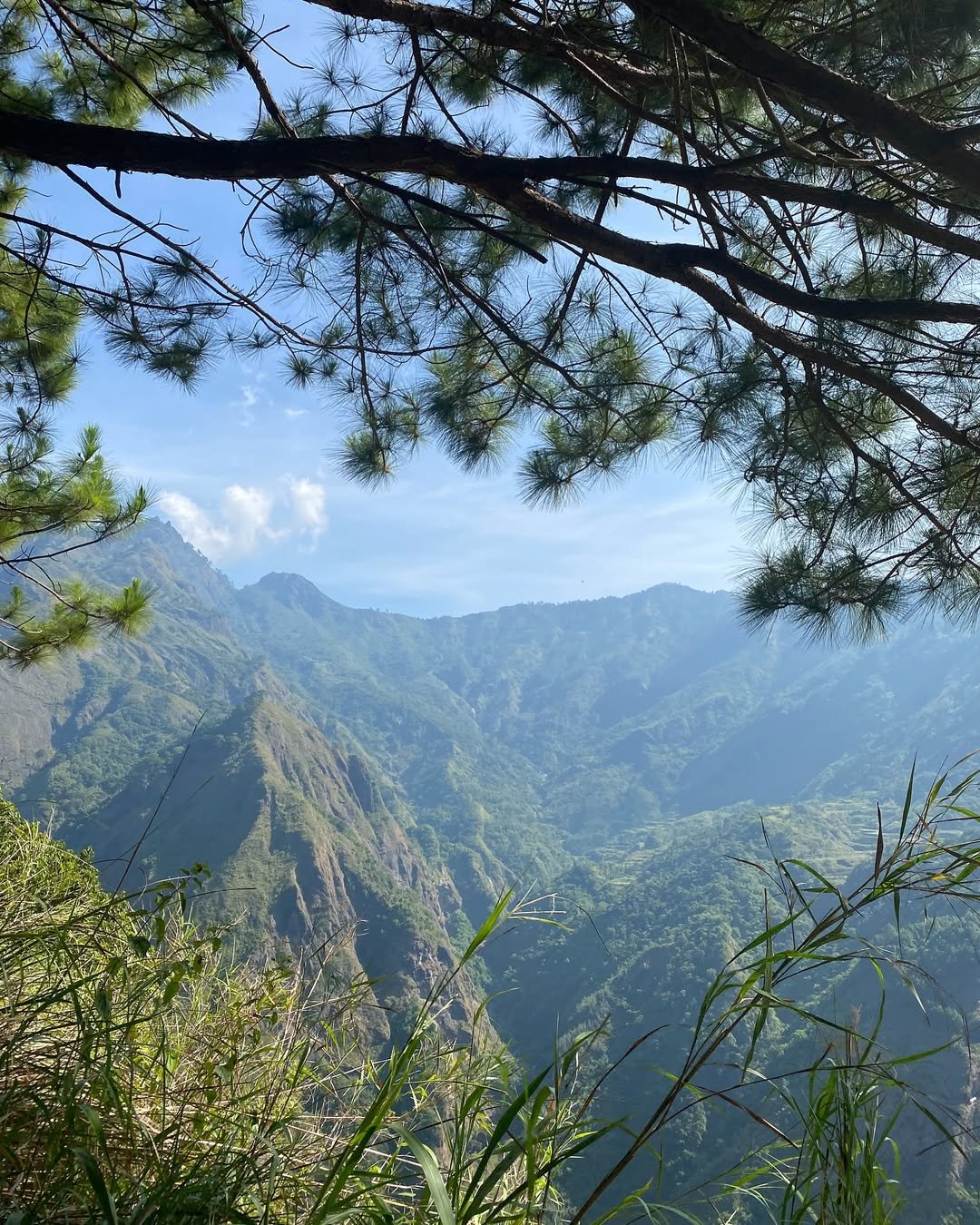
Crunching the Numbers: A Realistic Budget for Your Mt. Kabunian Hike
Alright, let’s talk about the green stuff. A trip to a remote paradise like Mt. Kabunian doesn’t have to break the bank, but it absolutely requires smart financial planning. The question of “how much will it cost?” was one of the first things my group sorted out. To help you, I’ve broken down the typical expenses based on my own trip and current 2025 estimates. Remember, costs can vary, but this will give you a solid financial blueprint.
This budget assumes you are part of a small group (e.g., 4-5 people), which is the most cost-effective way to do it.
Transportation (The Biggest Chunk)
This will be your largest single expense, without a doubt. Getting from the city to the heart of the Cordilleras is the price of admission for this incredible adventure.
Bus (Manila to Baguio, Round Trip): Expect to pay between `₱1,200 to ₱1,600 per person for a regular air-con bus.
Private Van (Baguio to Bakun, Round Trip): This is the most practical option. A van rental for the weekend will cost approximately
₱8,000 to $₱10,000. Don’t let that number scare you! When you divide it by 5 people, it comes out to `₱1,600 to ₱2,000 per person. This is worth it for the convenience and direct access to the jump-off.
Essential Fees (The Non-Negotiables)
These are the fixed costs that go directly to supporting the local community and conservation efforts. Think of it as your direct contribution to preserving the sanctity and beauty of Mt. Kabunian.
Registration/Environmental Fee: Around `₱150 per person.
Guide Fee: The standard guide fee is
₱1,500for a day hike. This is for the entire group, so for a group of 5, that’s only `₱300 per person.
Accommodation & Food (Creature Comforts)
After a tough hike, a warm meal and a simple bed feel like five-star luxury. Thankfully, needs in Bakun are humble and affordable.
Homestay: A bed in a local homestay typically costs `₱300 to ₱500 per person per night.
Food: I would budget around `₱800 per person for the entire trip (Day 1 dinner, Day 2 breakfast & lunch, plus snacks). You can save money by bringing your own trail food (nuts, energy bars, etc.).
Sample Budget (Per Person for a Group of 5)
Transportation:
1,400(Bus) +1,800(Van) =3,200Fees:
150(Registration) +300(Guide) =450Lodging & Food:
400(Homestay) +800(Food) =1,200Estimated Total Budget:
4,850per person
This is a realistic, comfortable budget for a weekend trip. Your investment goes not just towards an incredible experience, but also towards supporting the local economy that protects this sacred mountain.

